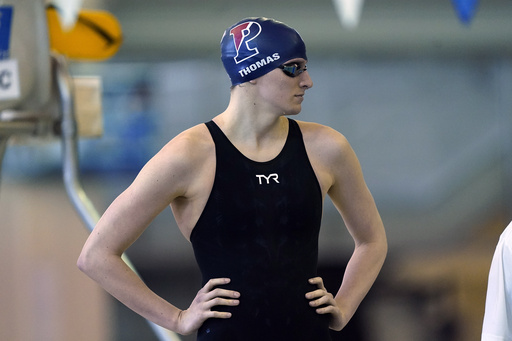
Donald Trump, in his candidacy, made strong statements regarding transgender policies, vowing to eliminate what he termed “transgender insanity” from educational institutions and to ensure that men do not participate in women’s sports. Following his inauguration for a second term, Trump wasted no time in addressing these issues. On his first day, he signed an executive order focused on “restoring biological truth to the federal government,” further solidifying his stance on gender identity and sports with another order titled “Keeping Men Out of Women’s Sports” shortly after.
The implications of these executive orders grant federal agencies the authority to impose penalties on institutions receiving federal funds that do not uphold what Trump defined as equitable athletic opportunities for women and girls. He proclaimed, “The war on women’s sports is over,” although the reality suggests potential legal challenges to these orders, similar to those faced by past executive actions concerning transgender issues.
One crucial aspect of the executive order is its enforcement capability across various institutions—ranging from educational establishments to sports organizations. Compliance is defined by the condition that any entity denying female students an equal opportunity to engage in sports, especially by requiring them to compete with males in the women’s category, could face repercussions. The Education Department swiftly announced investigations into institutions such as San Jose State University and the University of Pennsylvania for reported violations of Title IX related to transgender athlete participation.
Presidential administrations hold the power to interpret Title IX, a pivotal law associated with gender equity in athletics and campus sexual harassment prevention. The contrasting interpretations of this law between administrations have created confusion and inconsistency. Joe Biden’s administration interpreted “sex” in Title IX as encompassing “gender identity,” thus protecting transgender athletes; however, it took years to finalize accompanying regulations which were often subject to legal challenges. In contrast, Trump’s order redefines “sex” strictly as the biological classification of male or female, rejecting the notion of “gender identity” as synonymous with sex.
The exact number of transgender athletes affected by this order is difficult to ascertain. The NCAA, which governs over 500,000 athletes nationwide, does not maintain specific records of transgender athletes. A survey from GLSEN indicated a small percentage of high school students participate in sports aligned with their gender identity, while estimates suggest about 300,000 high school-age individuals identify as transgender, though participation rates remain unclear.
Beyond the scope of transgender athletes, Title IX encompasses broader issues of equality and fairness in women’s sports. Reports indicate longstanding gender inequities exist at all levels of athletics, highlighting a significant gap in compliance with Title IX mandates. Notably, no institution has yet faced the loss of federal funding for failing to conform to Title IX’s requirements for equitable treatment and access for women.
At the state level, many have already implemented laws that restrict transgender athletes from competing according to their identified gender. Legal challenges to Trump’s recent orders are expected from various states, with some leaders labeling them as discriminatory and pushing back against federal mandates.
In the realm of collegiate athletics, the NCAA’s Board of Governors quickly adapted its policies in response to the executive order, requiring that only athletes assigned female at birth may compete in women’s sports. The National Association of Intercollegiate Athletics also took a decisive stance, unanimously banning transgender participation in women’s competitions.
On the international stage, the order requests that the U.S. Secretary of State work towards persuading the International Olympic Committee to establish a coherent policy regarding transgender athletes. The IOC has historically delegated this responsibility to individual sports federations. Future governance might change with the selection of a new IOC president, potentially bringing new policies in line with the current administration’s stance. The IOC has stated its intention to continue discussions surrounding these issues with relevant authorities.
Overall, the far-reaching impacts of these executive orders by Trump’s administration are still unfolding, with anticipated legal battles and potential changes in sports policy at various levels continuing to be a significant focus.

